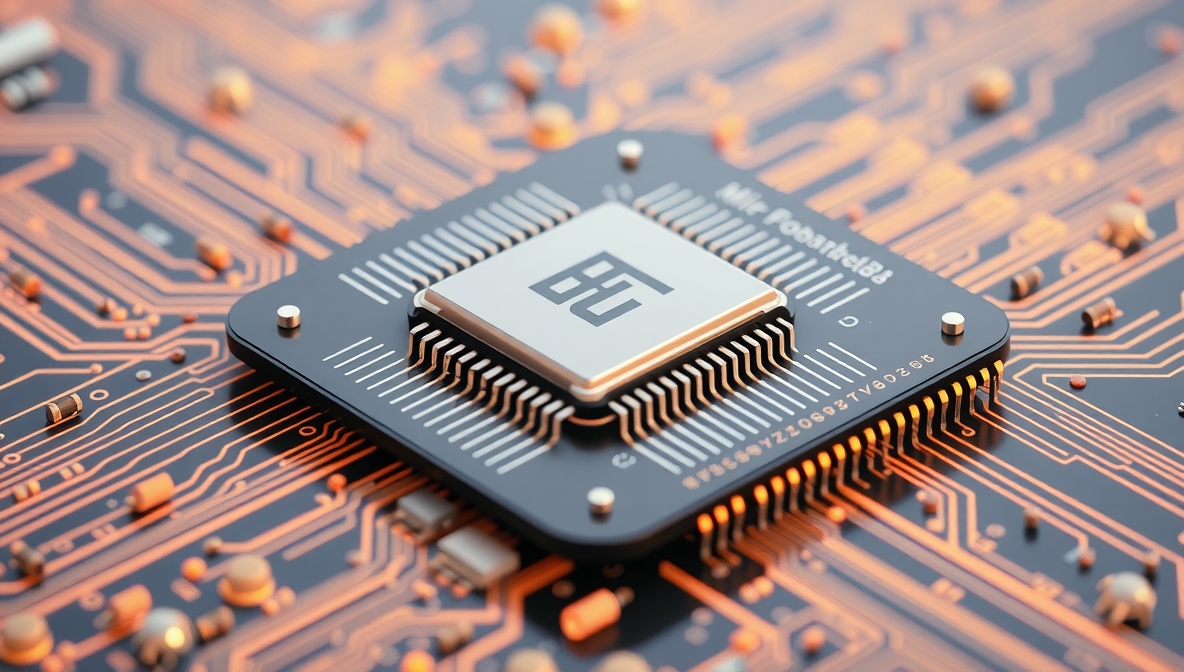Introduction
In a world where technology is embedded in every aspect of our lives, there exists one electronic component that serves as the beating heart of most smart devices around us: the microcontroller. This small component, often no larger than a fingernail, combines a processing unit, memory, and input/output capabilities on a single chip, enabling diverse devices – from simple toys to complex industrial systems – to operate autonomously and intelligently.
What is a Microcontroller?
A microcontroller is a tiny computer that combines all the basic components of a computer (processor, memory, input/output interfaces) on a single chip. Unlike standard processors used in personal computers, microcontrollers are designed to perform specific tasks in embedded systems, meaning systems that are integrated within other products.
A typical microcontroller includes the following components:
- Central Processing Unit (CPU): The brain of the microcontroller, which executes instructions and calculations.
- Program Memory (Flash Memory): Stores the software code that the microcontroller runs.
- Data Memory (RAM): Used for temporary storage of data during runtime.
- EEPROM: Non-volatile memory for permanent storage of data even when the device is powered off.
- Digital and Analog Ports: Allow communication with the external world.
- Timers: Enable time measurement and execution of precisely timed operations.
- Communication Interfaces: Such as UART, SPI, I2C, and others that enable communication with other components.
A Brief History of Microcontrollers
The first microcontroller was born in 1971, when Intel developed the 4004, the first single-chip processor. However, the first modern microcontroller was the TMS1000, developed by Texas Instruments in 1971, followed by the Intel 8048 in 1976.
Since then, the field has developed rapidly:
- In the 1980s, microcontrollers like Intel’s 8051 became an industry standard that is still used in modern versions.
- In the 1990s, microcontroller families like Microchip’s PIC and Atmel’s AVR (now owned by Microchip) offered improved performance at lower prices.
- In the 2000s, ARM-based microcontrollers began to spread, offering high performance with low power consumption.
- In the last decade, platforms like Arduino have made the use of microcontrollers accessible to beginners and hobbyists.
Popular Microcontroller Families
AVR
The AVR family, originally developed by Atmel, is one of the most popular families among hobbyists and developers. It serves as the basis for the popular Arduino platform.
PIC
PIC microcontrollers manufactured by Microchip are among the most common in the industry, with a wide variety of models suitable for various applications.
ARM Cortex-M
ARM Cortex-M based microcontrollers have become very popular in recent years thanks to their high performance and low energy consumption. They are used in a wide range of products, from medical devices to IoT devices.
ESP8266/ESP32
These microcontrollers from Espressif have become particularly popular in the IoT field, thanks to their built-in WiFi and Bluetooth capabilities at a low price.
Common Uses
Microcontrollers are found in almost every modern electronic device:
- Home Appliances: Microwaves, washing machines, smart refrigerators
- Consumer Electronics: Remote controls, toys, digital cameras
- Transportation: Engine control systems, ABS, safety systems
- Communication: Mobile phones, routers, modems
- Medicine: Medical equipment, monitoring devices, insulin pumps
- Industry: Robots, machine control, industrial automation
- IoT (Internet of Things): Smart sensors, smart home devices, environmental monitoring systems
Advantages of Microcontrollers
Microcontrollers offer several significant advantages:
- Low Cost: Basic microcontrollers cost less than one dollar in mass production.
- Small Size: Compact design allows integration into small products.
- Low Power Consumption: Some models can operate for years on a small battery.
- Reliability: The relatively simple architecture leads to fewer malfunctions.
- Flexibility: They can be programmed to perform a wide range of tasks.
- Ease of Development: Modern development tools enable relatively easy programming.
Challenges and Limitations
Despite their advantages, microcontrollers also present challenges:
- Limited Performance: Compared to personal computer processors, speed and power are limited.
- Limited Memory: The size of programs and data is constrained by available memory.
- Programming Complexity: Low-level programming requires a deep understanding of hardware.
- Challenging Debugging: Finding bugs in embedded systems can be complicated.
- Security: Many microcontrollers are not designed for high security, which poses a challenge in the IoT era.
Programming Microcontrollers
Programming microcontrollers is typically done in one of the following languages:
- C/C++: The most common languages for microcontroller programming, offering a good balance between ease of use and performance.
- Assembly: Allows precise control and maximum efficiency, but is more complex to write and maintain.
- MicroPython/CircuitPython: Lightweight versions of Python that allow easier programming at the expense of performance.
- Arduino IDE: A simple development environment based on C++ with libraries that make usage easier.
The Future of Microcontrollers
With the development of the Internet of Things (IoT) and smart devices, microcontrollers continue to evolve in several directions:
- Advanced Capabilities: New models incorporate graphics processing, machine learning, and AI capabilities.
- Lower Energy Consumption: Modern microcontrollers can operate with minimal energy consumption, enabling applications powered by environmental energy (Energy Harvesting).
- Improved Security: Manufacturers are implementing more security mechanisms in response to growing cyber threats.
- Integration: Microcontrollers incorporate more auxiliary components such as wireless communication interfaces and advanced analog circuits.
- Transition to Advanced Manufacturing Processes: Using advanced manufacturing technologies allows the creation of smaller and more efficient microcontrollers.
Conclusion
The microcontroller is one of the most important and common electronic components in our world. Despite its small size, its impact on modern life is enormous. As technology continues to evolve, microcontrollers are expected to continue playing a central role in technological innovation, enabling the next revolution of smart and connected devices.
Understanding the principles of microcontrollers is not only essential for electronics engineers but also for developers, product designers, and anyone interested in understanding and participating in shaping our technological future.














